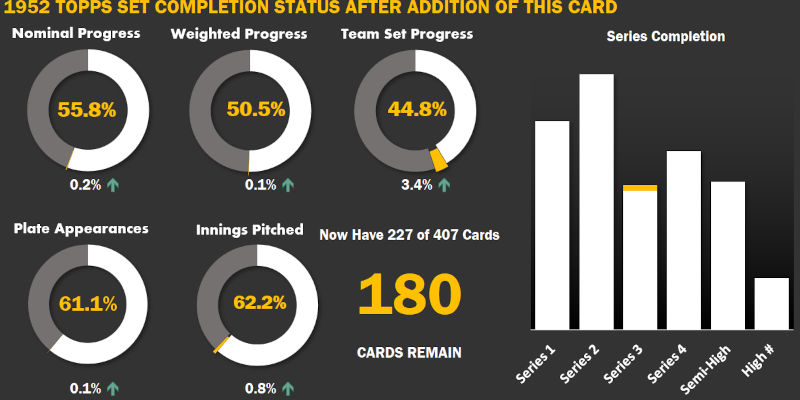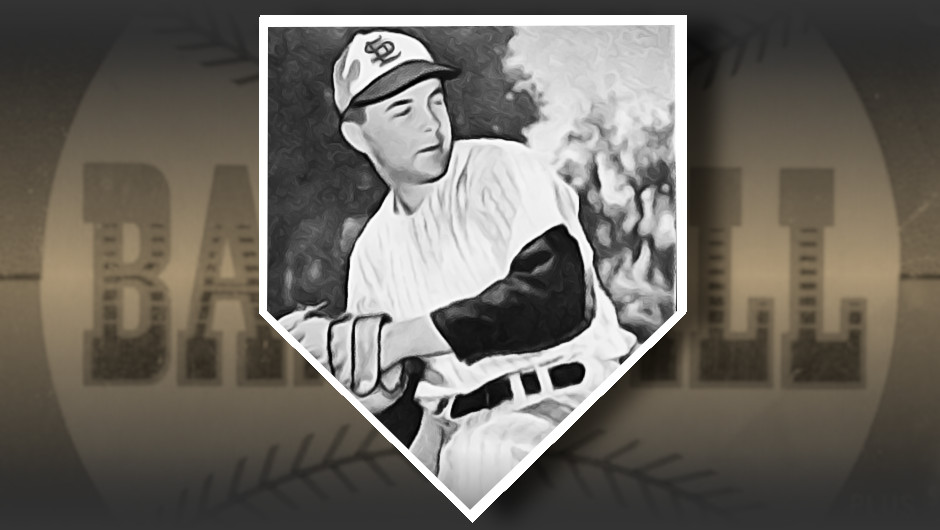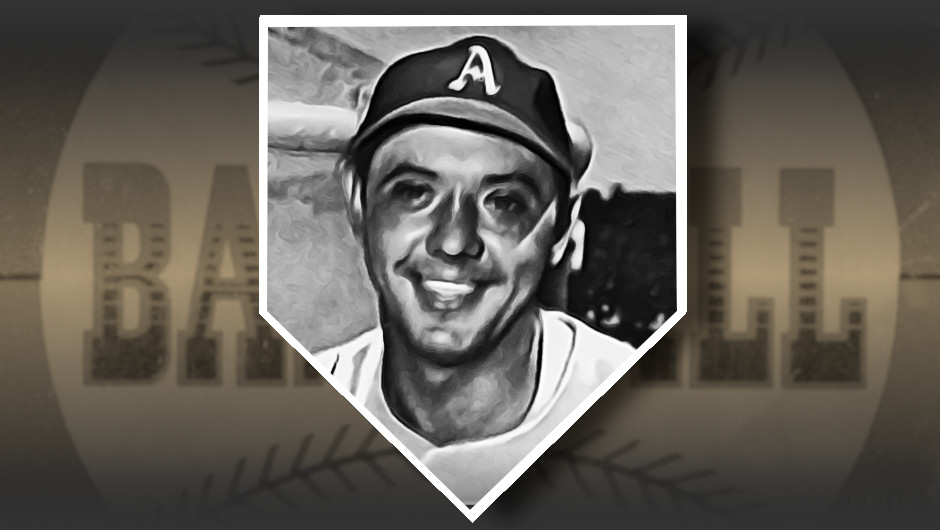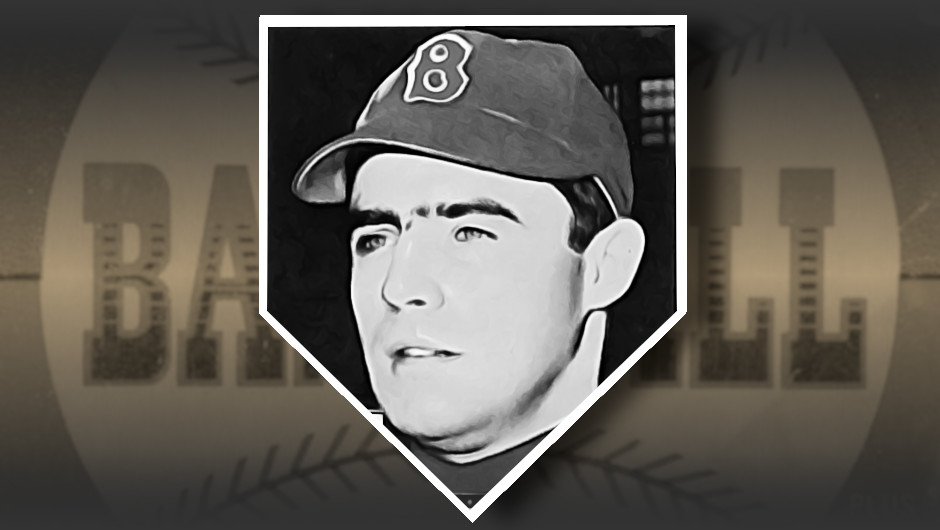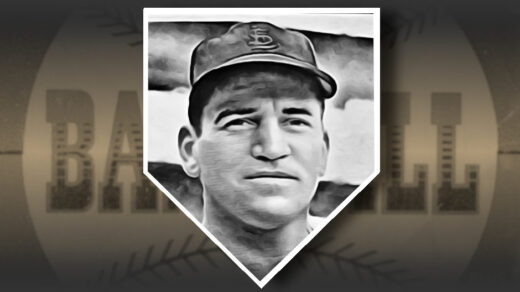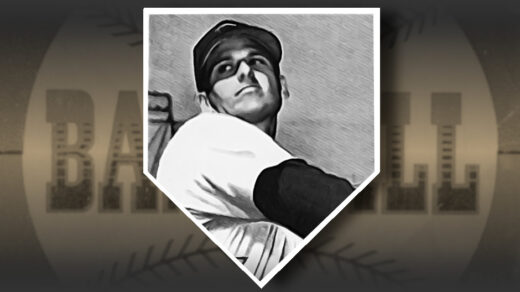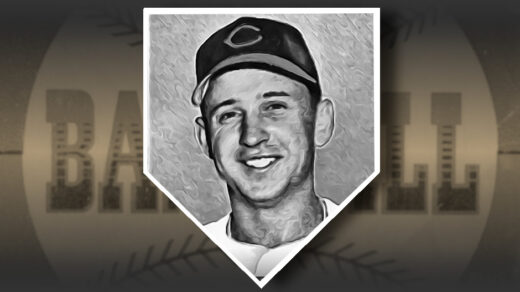Sunglasses have always been a fun item to watch out for on baseball cards. Players have been regularly donning them for a century, yet it wasn’t until action photos began to regularly appear on cards that they began to show up with any regularity on cardboard. Posed shots with shades on vintage cards look almost out of place. More than once the specs modeled in the 1970s by DB Cooper stunt double pitcher Lowell Palmer have led collectors to start dark-tinted subcollections.
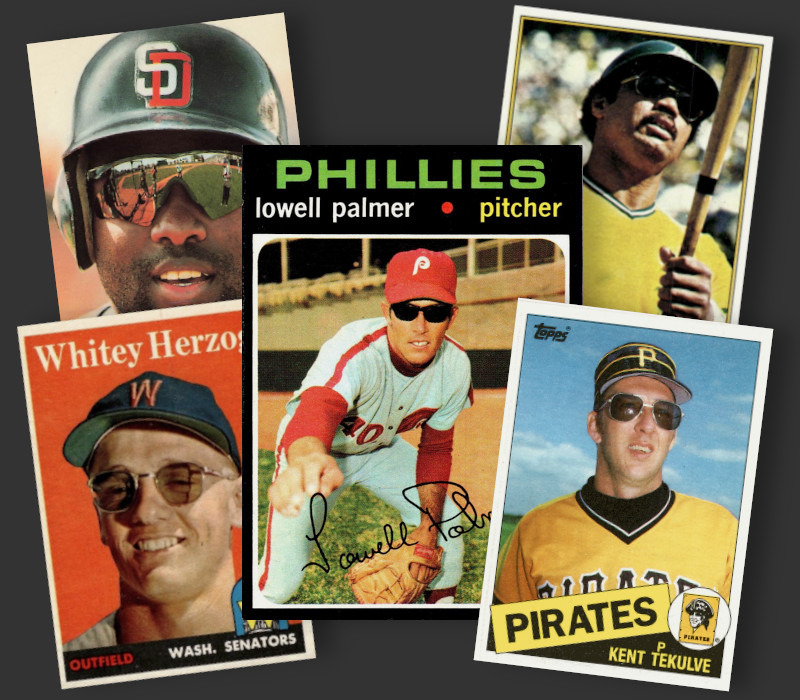
With cards in the 1957 and 1958 Topps sets, Whitey Herzog may be the best known representative of the 1950s cohort of sunglass-wearing players. Walt Masterson, however, appeared in sunglasses on even more cards during the decade. His trademark red-tinted eyewear appears in the Bowman releases of 1950, 1951, and 1953. Red lenses are very good at reducing glare, but can distort the ability to make out objects that have a red color of their own. This wasn’t a problem for the near-sighted and already color-blind Masterson, who benefitted from eliminating the glare from stadium lights and the white gravel surrounding many backstops.
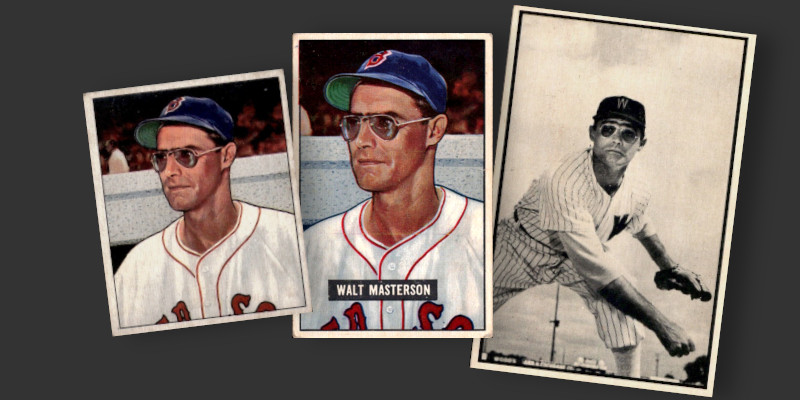
Masterson was already an old-hand on the mound before appearing on these cards, having broken into the majors with the Senators in 1939. Washington did not have much of a player development program so Masterson had to adjust to top level competition almost immediately after signing with the club. He began to figure it out in 1942, shutting out the opposition for 4 of his 5 victories that season.
His W-L record never amounted to much, but his underlying metrics revealed a pitcher who generally produced a consistent baseline major league level of performance. His record improved when he was traded to the high scoring Red Sox. Boston, however, proved to be run by strict management that went against Masterson’s personality. Upon learning that teammate Ken Wood had been traded from Boston to Washington, Masterson asked the departing infielder to express his desire to come back to the Senators. A deal was soon reached and he found himself playing under the much more laid back Bucky Harris.
Late in his career Masterson developed a case of the Yips. Mental blocks began to affect his performance and according to a 1990 interview he found himself throwing baseballs that didn’t exist. Looking at greener pastures through his rose colored glasses, the pitcher retired from baseball and took up a more lucrative position as a wholesale shoe salesman. The time away from the game proved effective and he was able to return for another year in the big leagues in 1956 and a short stint in the PCL the following season.
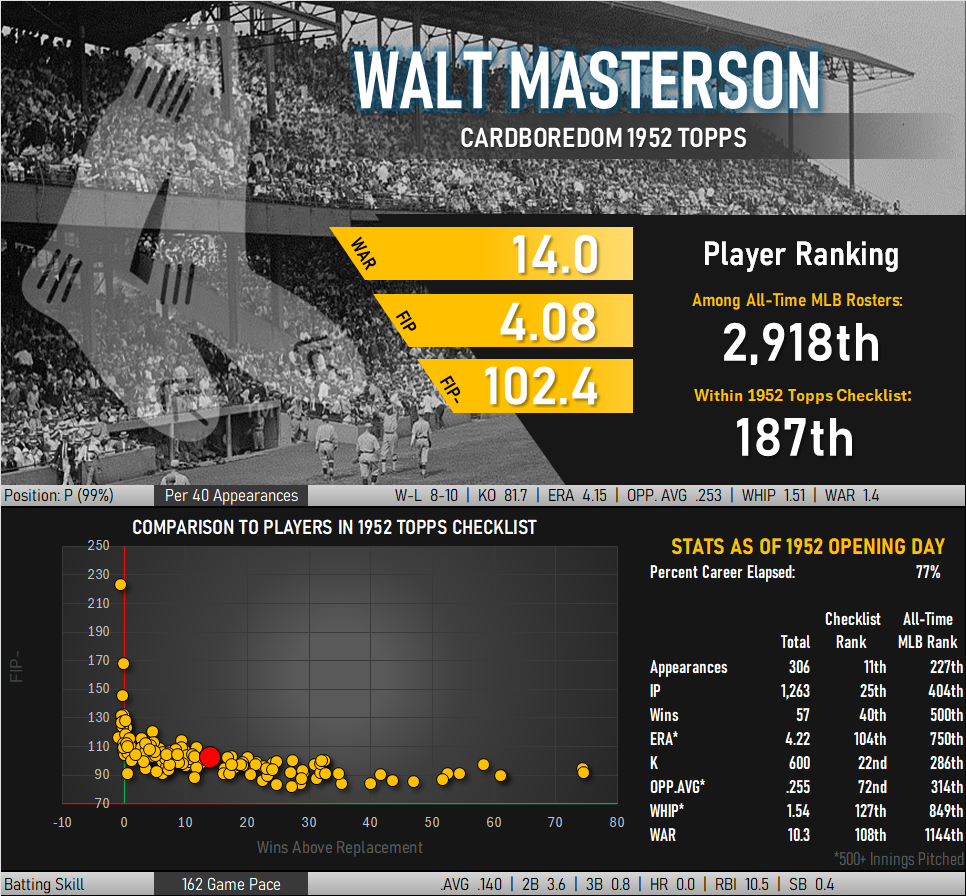
Anagrams
From time to time you will see me reference anagrams of baseball names. I find taking apart the letters of someone’s name and rearranging them into a new, cohesive word or phrase to be relaxing. It is even better if the reconstituted name spells out something that accurately describes the person. The seemingly universal example used to demonstrate this is the transformation of “Clint Eastwood” into “Old West Action.”
The letters of Walt Masterson’s name turned up an apt description of the pitcher, spelling “A Mantle’s Worst” when strung together in an alternative order. Masterson and Mickey Mantle faced off 27 times during the overlapping portions of their careers. Mantle drew some walks, but was otherwise held to a 5 for 22 performance with zero extra base hits. That’s a .227 batting average coupled with an identical slugging percentage of .227.
Masterson in ’52 Topps
Appearing as card #186 in the middle of the 1952 Topps checklist is a pitcher whose performance was safely middle of the pack. Topps missed the opportunity to match Masterson’s red sunglasses with the red turtleneck underlying his uniform. Instead we are treated to an unnatural looking Red Sox cap and a unibrow. Usually such an image indicates a heavily retouched photograph of the player in the uniform of an earlier team. This is certainly a possibility, as Masterson had only recently come to the Boston squad from Washington in 1949. Of course, it could also be an artifact of a photo selection that did not lend itself well to the Flexichrome coloring process.
The text on the back of the card mentions his military service in the Navy Submarine Forces in World War II. The card also notes that he was 6’2″ tall, a stature not very conducive to the cramped conditions of underwater service in the Pacific. Masterson voluntarily enlisted for Navy service, though his tour of duty didn’t put him into the role of being a submariner. The tall pitcher kept subs running by shuttling in and out of Pearl Harbor on the tender USS Apollo.
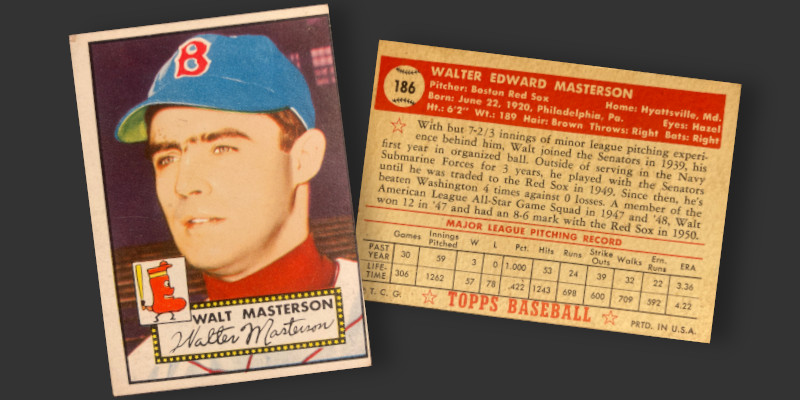
This particular card was added to my set from a common bin at the end of a card show in Chantilly. By the time I came across it I had nearly given up hope of finding any affordable cards for my set and had resigned the rest of my afternoon to thumbing through bulk boxes of cards for the sheer entertainment value of the exercise. This miscut example has three very sharp corners and one on the upper left that looks like it took the brunt of a fall. The card is a perfect addition if one is inclined to view the world through rose colored glasses.
